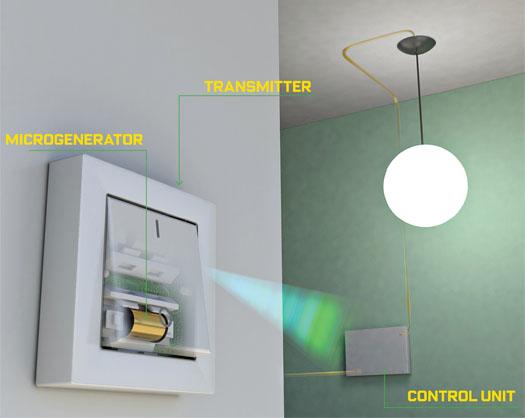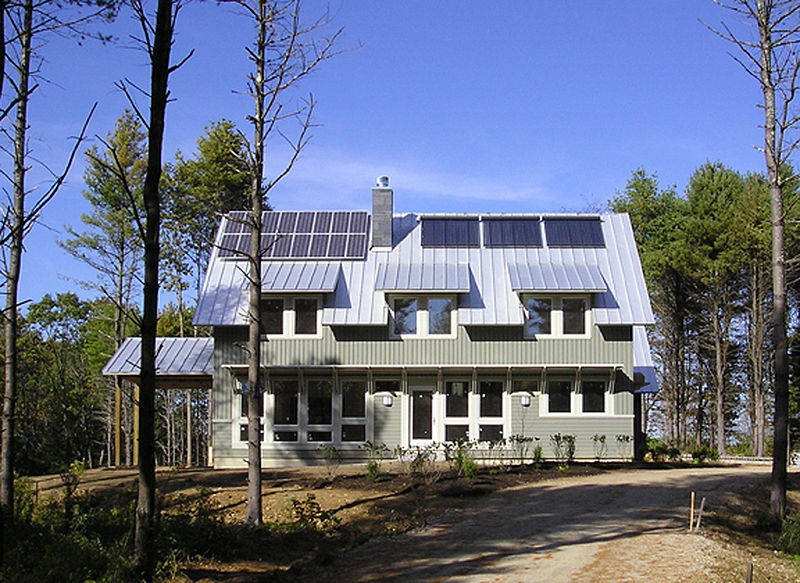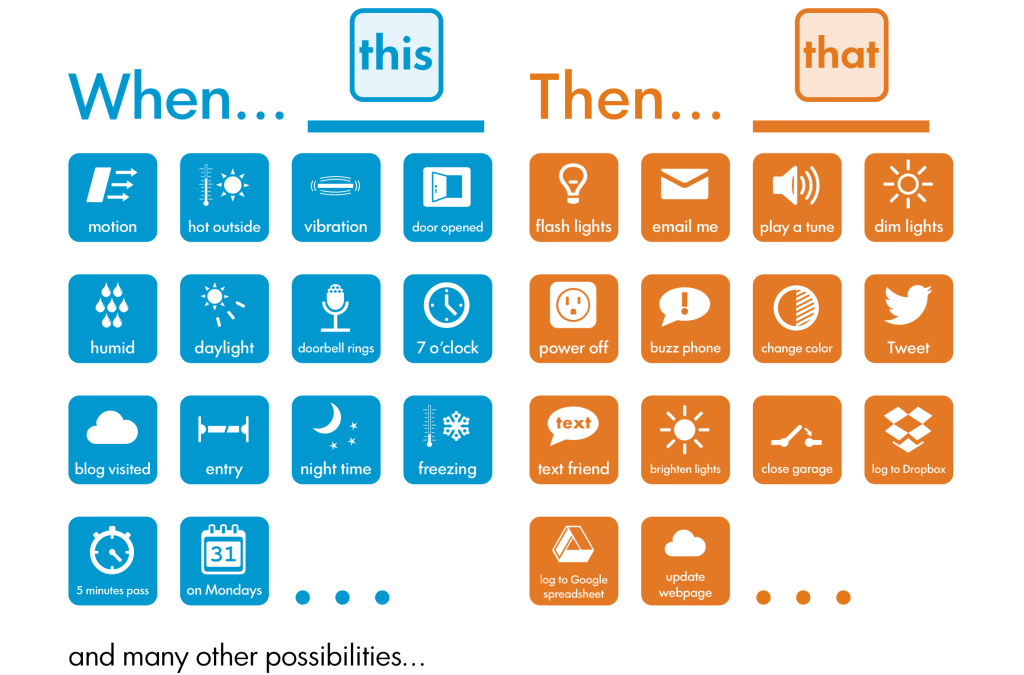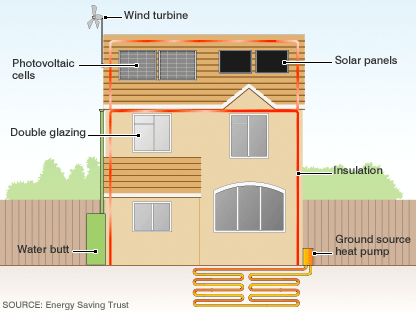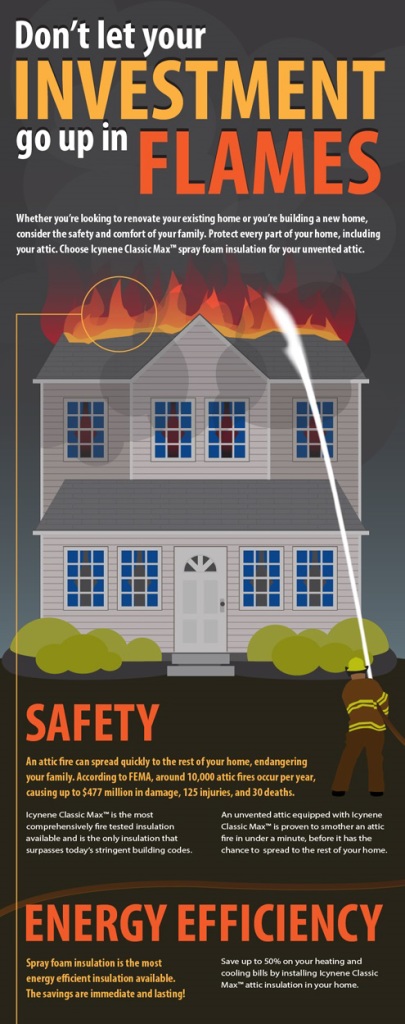Related: SmartHouse Research Channel
Is Micropower the Key to Tackling Climate Change?
There is no shortage of shouting and dire warnings about the state of the climate and our need to phase out fossil fuels. But there is a more silent revolution happening too — in micropower.
Small-scale electricity generation is slowly replacing big fossil-fuel driven power plants, which are currently the world’s single largest contributor to greenhouse gas emissions.
These micro-electricity producers are relatively small scale, inexpensive, and most importantly, produce little to no carbon emissions. Last year micropower contributed to around a quarter of the world’s energy, up from 10% in 2000.
What is Micropower?
Rooftop solar may be the first thing that springs to mind, but micropower is much more than just solar panels on roofs. The definition of micropower can sometimes be confusing. Amory Lovins and his coauthors discuss this in The Economist’s 2002 book of the year Small Is Profitable and define micropower as “all renewables except big hydro”.
This definition of micropower thus includes wind farms, even though these can be quite large, because of the scalable (you can plant more or less wind turbines), rapidly deployable, and distributed nature of the individual units.
It does not, however, include hydropower plants larger than 50 megawatts or nuclear power plants, even though these are low- or no-carbon.
Most recently, the Rocky Mountain Institute has included industry sales data of cogeneration power plants in its analysis of micropower trends.
Cogeneration on the Rise
In essence, cogeneration uses energy twice — once to produce electricity, and a second time as heat. It is often referred to as combined heat and power. By producing heat for buildings and houses, cogeneration is much more efficient than even thermal plants, which only generate electricity.
Cogeneration has risen dramatically in the past 15 years, but is often overlooked in estimates of energy production. It comes in a variety of forms and can even use waste gases from agriculture and industrial production.
An even more efficient process is sometimes called trigeneration, producing both heating and cooling. Have you ever seen those mysterious plumes of steam rising from manhole covers in New York, in films like Martin Scorcese’s Taxi Driver? Much of that steam comes from New York’s steam system, which is used to heat and cool buildings in Manhattan.
Trigeneration can convert as much as 93% of fuel into useful energy.
Although many cogeneration plants still rely on natural gas for power, they produces roughly 40% less greenhouse gas than a coal plant. While many environmentalists advocate an immediate switch to renewables, others argue that natural gas is providing a lower-carbon “bridge” while the use of renewables can be scaled up.
Grids Going Micro Too
It’s not just power plants that are going micro. Micro-grids are being built all over the world, both to increase energy efficiency and to provide adaptable and resilient power in the case of major storms or natural disasters like Hurricane Sandy. This is particularly important as extreme weather events are likely to increase due to global warming.
These micro-grids, which typically incorporate renewables and cogeneration, are designed to be able to operate independently of the main power grid. If disaster strikes, they can produce islands of power to critical facilities such as police, fire services and hospitals.
While more than 260 such projects are planned or operating in the United States, Connecticut has become the first state to role out a statewide pilot. Micro-grids aren’t just helpful during natural disasters — they avoid long-distance transmission, so can reduce line energy losses which can reach as high as 20%.
Cities, and the way they are powered, will undoubtedly play a huge role in the transition to a sustainable and resilient energy future. New York has reduced its greenhouse gas emissions by 19% since 2005. This is partly from an increased use of cogeneration and natural gas, and upgraded city operations using cleaner vehicles.
In fact, while “going green” often conjures up images of Arcadian off-grid living, New Yorkers have the smallest carbon footprint in America. They generate less than 30% of the average national emissions. Compact cities are more energy efficient for a host of reasons, and as many have pointed out, the way to a green future isn’t urban sprawl.
The central power plants that dominated the 20th century energy landscape are seeing their market share in energy generation fall rapidly. New power plants are becoming smaller, scale-able and more efficient, as renewables and cogeneration continue to increase their production share.
The Past and Future of Micropower
In many ways the rapid growth of micropower is a back to the future scenario.
In 1882, Thomas Edison’s famous Pearl Street plant began generating heat and electricity for lower Manhattan. Natural Geographic has a wonderful explorable infographic about the way “power pulses, information flies, and steam flows” below the streets of New York.
Thomas Edison envisioned similar systems to provide local power and heat into the future. Power grids and centralized power plants changed all that, and the 20th century seemed to prove Edison wrong.
But clearly things have changed since then, as micro-power’s market share pushes upwards. Technological innovation, changes in energy production and extraction, and public concern over climate change and natural disasters have helped power the revolution.
We certainly aren’t in the clear yet, and the world desperately needs a global climate agreement. The future may still be cloudy, despite the groundbreaking deal between the US and China, but the micropower revolution bodes well for a resilient, secure, and low-carbon energy future. Perhaps every cloud does have a silver lining.
Published in collaboration with The Conversation
Author: Morgan Saletta is a Doctoral Candidate and Graduate TA in History and Philosophy of Science at University of Melbourne.
Image: Wind turbines at the Infigen Energy wind farm can be seen on the hills surrounding Lake George, located on the outskirts of the Australian capital city of Canberra October 15, 2014. REUTERS/David Gray
Beyond LEDs: Brighter, New Energy-Saving Flat Panel Lights Based on Carbon Nanotubes

Enter Carbon Electronics
Electronics based on carbon, especially carbon nanotubes (CNTs), are emerging as successors to silicon for making semiconductor materials. And they may enable a new generation of brighter, low-power, low-cost lighting devices that could challenge the dominance of light-emitting diodes (LEDs) in the future and help meet society’s ever-escalating demand for greener bulbs.
Scientists from Tohoku University in Japan have developed a new type of energy-efficient flat light source based on carbon nanotubes with very low power consumption of around 0.1 Watt for every hour’s operation—about a hundred times lower than that of an LED.
In the journal Review of Scientific Instruments, from AIP publishing, the researchers detail the fabrication and optimization of the device, which is based on a phosphor screen and single-walled carbon nanotubes as electrodes in a diode structure. You can think of it as a field of tungsten filaments shrunk to microscopic proportions.
They assembled the device from a mixture liquid containing highly crystalline single-walled carbon nanotubes dispersed in an organic solvent mixed with a soap-like chemical known as a surfactant. Then, they “painted” the mixture onto the positive electrode or cathode, and scratched the surface with sandpaper to form a light panel capable of producing a large, stable and homogenous emission current with low energy consumption.

“Our simple ‘diode’ panel could obtain high brightness efficiency of 60 Lumen per Watt, which holds excellent potential for a lighting device with low power consumption,” said Norihiro Shimoi, the lead researcher and an associate professor of environmental studies at the Tohoku University.
Brightness efficiency tells people how much light is being produced by a lighting source when consuming a unit amount of electric power, which is an important index to compare the energy-efficiency of different lighting devices, Shimoi said. For instance, LEDs can produce 100s Lumen per Watt and OLEDs (organic LEDs) around 40.
Although the device has a diode-like structure, its light-emitting system is not based on a diode system, which are made from layers of semiconductors, materials that act like a cross between a conductor and an insulator, the electrical properties of which can be controlled with the addition of impurities called dopants.
The new devices have luminescence systems that function more like cathode ray tubes, with carbon nanotubes acting as cathodes, and a phosphor screen in a vacuum cavity acting as the anode. Under a strong electric field, the cathode emits tight, high-speed beams of electrons through its sharp nanotube tips—a phenomenon called field emission. The electrons then fly through the vacuum in the cavity, and hit the phosphor screen into glowing.
“We have found that a cathode with highly crystalline single-walled carbon nanotubes and an anode with the improved phosphor screen in our diode structure obtained no flicker field emission current and good brightness homogeneity,” Shimoi said.

Field emission electron sources catch scientists’ attention due to its ability to provide intense electron beams that are about a thousand times denser than conventional thermionic cathode (like filaments in an incandescent light bulb). That means field emission sources require much less power to operate and produce a much more directional and easily controllable stream of electrons.
In recent years, carbon nanotubes have emerged as a promising material of electron field emitters, owing to their nano-scale needle shape and extraordinary properties of chemical stability, thermal conductivity and mechanical strength.
Highly crystalline single-walled carbon nanotubes (HCSWCNT) have nearly zero defects in the carbon network on the surface, Shimoi explained. “The resistance of cathode electrode with highly crystalline single-walled carbon nanotube is very low. Thus, the new flat-panel device has smaller energy loss compared with other current lighting devices, which can be used to make energy-efficient cathodes that with low power consumption.”
“Many researchers have attempted to construct light sources with carbon nanotubes as field emitter,” Shimoi said. “But nobody has developed an equivalent and simpler lighting device.”
Considering the major step for device manufacture—the wet coating process is a low-cost but stable process to fabricate large-area and uniformly thin films, the flat-plane emission device has the potential to provide a new approach to lighting in people’s life style and reduce carbon dioxide emissions on the earth, Shimoi said.
More information: scitation.aip.org/content/aip/… 10/10.1063/1.4895913
How the Internet of Things Could Make Media Physical Again
Not so long ago, every act of consumption began with a ritual. We pulled records from sleeves and perched them on turntables, slid books from shelves, watched as VHS tapes were ingested with a soft ca-chunk.
Qleek, from Paris-based startup Ozenge, aims to return our digital media to a state in which they can be collected, stored, handled, played and shared in the same way that physical media were, once. The makers of Qleek want you to pick up a wooden hexagon printed with, for example, the artwork for an album or mix, place it on a reader, and hear the corresponding tracks play on your device of choice.
At first, Qleek sounds as if it will only interest the kind of nostalgics who want their houseguests to see how refined is their taste. But it’s an example of a larger phenomenon with the potential to redefine the nature of human-computer interfaces.
We’re at a uniquely exciting time in the evolution of the internet of things where the technology is beginning to run ahead of the vision of designers. What comes next is figuring out how to make the re-physicalization of media useful—and perhaps even elegant—instead of merely a curiosity.
Airfy

Ninja Sphere
Ninja Sphere acts as an intelligent “hub” that connects to the separate devices you already own and helps them communicate with your other home automation gadgets without asking you to pull out your phone unless absolutely necessary. It does this in part by knowing where objects like your phone or your pets are located in relation to you. When a sensor notices some activity–the dog’s Internet-connected collar sends an alert, for example–the Ninja Sphere tries to determine what action to take next.
The “Spheramid” hub can work out that everyone has left the house and that an electric heater has been left on. It could then ping you via a text message to ask if that’s okay, and then turn off the heater on demand.
Since the sphere can keep tabs on virtually any object that you attached a smart tag to, the possibilities become quite intriguing. Place a Bluetooth-enabled smart tag on your jewelry box, for instance. The Ninja Sphere could then detect that the box of valuables is moving, while also sensing that none of the owners’ smartphones are nearby. It would then alert you to a potential theft in progress (or at least that the five-year-old is playing dress up with mom’s best baubles).
The Ninja Sphere is being made by a small company in Sydney, Australia that had some previous success with Ninja Blocks, a stand-alone connected sensor a bit like the SmartThings system. The Ninja Sphere is the next logical iteration, a hub to connect it all together–and the product long ago surpassed its funding goal on Kickstarter.
Sensor Technologies Becoming Integral Part of Energy-Efficient Buildings
Growing interest in energy conservation, and reducing carbon dioxide emissions, has encouraged research in energy-efficient buildings and stepped up the use of sensors in building applications. In fact, the construction of green buildings has become easier with the advent of smart sensors and actuators, as information on local environment and occupancy enables building automation systems to utilize energy in an efficient manner.
New analysis from Frost & Sullivan, finds that sensors are gradually becoming an integral part of buildings, allowing the demand-based control of systems such as lighting and HVAC. Equipping homes and buildings with motion and air quality sensors too has become a popular trend in the construction sector in recent times.
“A key factor driving the growth of sensors is the integration of wireless communication techniques in sensors, thereby enabling systems to overcome the challenges posed by wired sensor networks,” said Technical Insights Research Analyst Sumit Kumar Pal. “Wireless sensors can be easily fitted into existing infrastructure.”
Moreover, incorporating energy harvesting techniques in sensors will ensure that zero power is drawn from the electricity grid while also reducing maintenance by eliminating the need for battery replacements. However, self-powered sensors need to be highly accurate with minimum errors in terms of false positives and false negatives.
Sensor errors such as not being able to detect human presence or indicating the presence of an occupant even when no person is present can limit widespread implementation.
“Providing multi-sensing capabilities for various parameters such as temperature, humidity, carbon dioxide levels, and light intensity along with occupancy sensing will facilitate comprehensive monitoring of the environment and minimize sensor reading errors to a large extent,” added Pal. “The installation of devices using microelectromechanical systems and nanosensors can further help overcome these challenges and reduce overall costs.”
Smart Homes on Steroids = SmartHouse
People who already live in smart homes, but want to make them easier to customize. Customization is really required in automatization and that’s why cookie cutter solutions are frustrating for people.
What the Internet of Things Means to Cleantech
The ability to connect “things” results in the possibility of automating decision making in a broad endeavor to drive efficiencies in areas ranging from lighting to home appliances to the smart grid. Almost all of these are broad efficiency plays and carry the advantage of having much less technology risk than other cleantech sectors like next-generation batteries or solar.
Key findings include:
◾ No single company dominates home energy management, and many players, from utilities to broadband providers, are becoming increasingly important partners in the ecosystem. There is tension in the market among those companies offering a single point solution like Nest and those attempting to fully connect the home under one automation system.
◾ Efficient and connected lighting is growing very quickly, particularly in the commercial and industrial space. LEDs are expensive, but lighting-as-a-service models could make them more attractive to customers.
◾ The Smart grid epitomizes the data services theme, connecting energy users’ data to the network with smart metering. Look for two-way communication, decentralized power generation, and a much more controllable and flexible demand side of the grid to change how energy is distributed and consumed.
◾ Environmental sensors will become increasingly widespread as they are made more compact and function on less power. Startups with simple, elegant, and creative solutions to producing value from that sensor data will find customers.
The Net-Zero Home – From Concept to Reality
As the name implies, net-zero homes generate about the same amount of energy that they consume. These homes generally have a very low carbon footprint, as well. It should be noted that net-zero homes are not necessarily disconnected from the power grid. A home with solar power, for example, might generate excess energy during the day and consume more energy at night.
For years, the net-zero home has represented an elusive goal in energy efficiency. While some buildings such as off-the-grid wilderness cabins have achieved the distinction in the past, they really couldn’t compare with a conventional home. Widespread achievement of this goal has been limited by technological and financial constraints.
Fortunately, times have now changed and technology has finally caught up with ideology. Individuals willing to make a substantial investment in energy conservation and power generation can indeed build a net-zero home that does not compromise the comfort and convenience that we all enjoy in other types of homes.
For some, this goal may be achieved in stages. For example, you can build a home that is highly energy efficient using passive technology such as insulation, efficient layout, appliance selection, etc. Later on, active power generating capabilities such as solar and wind can be added to offset the already low energy consumption.
So where do you begin? Below are a few of the basic elements that contribute to a net-zero home:
- Efficient Layout and Design – Build a home that is only as large as you need. Wasted space means wasted energy. Orientation of the building on the lot is critical. Many of these homes will have substantial window exposure on the south side of the house. Window overhangs on the south side can facilitate heating in winter when the sun is low and shade in summer when the sun is high. Conversely windows on the east and west sides of the house are sometimes minimized.
- An Air-Tight Envelope – New innovative wall and roof materials, insulation and windows are critical to regulate temperature inside the home. Not only do these materials keep energy from escaping, but they can also enable you to capture energy when you need it. For example, a strategically located concrete wall can absorb the sun’s energy during the day and release the heat into the house at night.
- Appliances & Equipment – Purchase highly efficient appliances, electronics and building systems to minimize your consumption of energy. Remember, the less energy you use, the less energy you need to generate in order to achieve a net-zero balance.
- Power Generation – No matter how low your energy consumption is, you will need a sustainable power source to equally offset usage. For most, the obvious choice is solar power. Not only can solar panels be used to generate electricity, solar water systems can be used for hot water or even to heat the entire home.
Small wind turbines are becoming more popular to generate electricity. In some cases, geothermal technology may be a good choice. Geothermal systems typically pump fluids deep into the ground to take advantage of the moderate temperatures below the surface. They can therefore be used for both heating and cooling purposes.
If this all sounds good to you, your next question is probably “How much does it cost?” Any financial analysis will need to include not only the upfront investment but also the energy savings over time. This can give you the rate of return on your additional cost along with the time required to pay it back. Government subsidies may factor heavily into these calculations. If the subsidies work for you now, make sure that they don’t expire before the home is actually built.
Below are a Few Examples of Net-Zero Homes:
- The National Institute of Standards and Technology recently built a state of the art 2,700 square foot Net-zero home for $2.5 million. This home utilizes both solar and geothermal power sources to offset energy consumption. While this one is admittedly outside the reach of most Americans, cheaper alternatives are available.
- zHomes has built a 10-Unit net-zero condo development near Seattle, Washington. A three bedroom unit in this complex recently sold for $466,000.
- Dow Chemical’s demonstration home in Midland, Michigan was listed for $250,000. This home also utilized both solar and geothermal energy. Dow makes the fluid that is pumped into the ground.
While cheaper developments are in the works, most homeowners still need to have a relatively long time horizon in order to recoup the additional investment in a net-zero home. For most, the choice to build a net-zero home will therefore be both a financial decision and an ethical one.
There is no doubt that net-zero homes will one day be a significant weapon in the battle against climate change. How quickly this happens will depend on technological developments, government subsidies and the will of the people to address the problem.
ProSeal Eco – A World First, Environmentally Responsible Insulation Solution
ProSeal Eco – a world first 100% water blown, medium-density closed cell spray foam insulation ideal for commercial and residential applications. This environmentally responsible solution does not contain any synthetic blowing agents and is 100% water blown. This environmentally responsible spray foam solution has been extensively tested for an expanded range of commercial application possibilities.
Comprehensive testing has confirmed that Icynene Classic Max spray foam insulation is the industry’s safest and most economical option for builders and homeowners looking to protect their homes from attic fires spreading. The test results confirm that Icynene Classic Max helps smother the fire in less than a minute.
Solar Power Craze on Wall St. Propels Start-up
By DIANE CARDWELL and JULIE CRESWELL
The first inklings of the idea came to Elon Musk and a cousin in an R.V. heading to the Burning Man festival in 2004.
Solar energy, they agreed, could be big.

But not even Mr. Musk, the billionaire behind the Tesla electric car, could have foreseen the solar power craze that is sweeping Wall Street. He and his cousins Peter and Lyndon Rive are riding a wave of exuberance over the industry and their young business, SolarCity.
The company — the nation’s largest provider of rooftop solar systems, with more than 80,000 customers — has not made a dime. And, frankly, no one quite seems to know when, or if, it will.
But SolarCity has captured investors’ imaginations and become a potent symbol of a stock market ascent that makes the vertigo-inducing heights of Twitter seem tame. SolarCity’s share price, which closed at $59.27 on Friday, has soared more than sevenfold since it went public, and the company, which did not exist eight years ago, is valued at roughly $4.9 billion.
Depending on whom you talk to, the rise of SolarCity and similar companies is either a sure sign that solar power is finally having its day or that yet another mania has gripped the markets.
Two other companies, SunPower and SunEdison, have also exploded in value. In all, an estimated $13 billion was invested in solar projects in 2013, a tenfold increase since 2007, according to GTM Research, which tracks the industry.
Solar companies have had the wind at their backs lately. The broad stock market is coming off its best year since 1997 — the Standard & Poor’s 500-stock index rose nearly 30 percent in 2013 — and the shares of many young companies have leaped from one high to another.
But few have been hotter than SolarCity, in part thanks to the Musk mystique surrounding Tesla Motors, itself a market darling.
This much is certain: The stock market has been very good to Mr. Musk, 42. On paper, his wealth quadrupled in 2013, to more than $5.5 billion, reflecting his stakes in SolarCity and Tesla. As chairman of SolarCity, he has little day-to-day involvement in the company.
“It’s the easiest job I have, that’s for sure,” Mr. Musk said in a telephone interview. “Most of what I do is show up to hear the good news.”
Still, SolarCity and its ilk face formidable challenges. It is trying to outrun rivals in a race to transform the power industry. Utilities are furiously working to undo the incentives that have fueled the solar industry’s growth. A generous federal tax credit is set to shrink in a few years. It has attracted the attention of regulators, who have questioned the way it values the rooftop systems.
And, because of its stock price, it must continue to feed Wall Street’s appetite.
“The market expects them to grow really rapidly for a while — there’s no other way that that price makes sense,” said Shayle Kann of GTM Research.
But there have been signs of growing pains. In interviews, former employees describe a high-pressure environment that went into hyper-drive when the company went public in December 2012. Complaints to the Better Business Bureau of misleading marketing and flawed installations, along with negative reviews on social media forums like Yelp, appear to be rising.
SolarCity says its employees as well as most of its customers are happy, and that its ratings have remained high. But the bad reviews have attracted the attention of Peter Rive, one of SolarCity’s co-founders and its chief operations officer. He regularly responds to the criticisms on Yelp.
“Any negative review that we get, be it through Yelp or through our own customer satisfaction survey, I take very seriously,” Mr. Rive, 39, said, adding that nothing he had seen indicated that service was deteriorating, despite the rapid growth. He delves into complaints, he said, “just because it bugs me — every single time somebody has a negative review I want to understand” the root cause of the problem.
SolarCity is not the first venture for the Rive brothers nor for Mr. Musk, who made a fortune as a co-founder of PayPal. The Rives were working at a computer services company that Lyndon Rive had started with another brother, but he was getting antsy.
“I wanted something that would be long-lasting,” Mr. Rive, 36, said. “And something that could solve some of the environmental challenges we’re facing.”
Mr. Musk suggested he look into solar.
The Rives, and a handful of others, decided not to simply sell solar systems. Instead, they pioneered a way to sell the energy itself, making SolarCity almost like a newfangled utility.
SolarCity and competitors like Sunrun, Sungevity and Vivint install rooftop systems for little to no upfront payment and then sell the electricity for prices below what customers pay utilities. Though greeted with skepticism at first, the service has proved appealing to customers who want solar power but do not have the cash to buy a system outright.
SolarCity will not predict when it will make a profit. In fact, executives argue that the losses are a good thing. “Losing more money means we’re investing more capital and creating more value,” Robert Kelly, SolarCity’s chief financial officer, said.
But as the company tries to expand and show robust growth, signs of customer dissatisfaction have emerged.
“This is the biggest homeowner’s mistake I have ever made,” said Jeffrey Leeds of El Grenada, Calif. With an electric bill running up to $450 a month, Mr. Leeds turned to SolarCity in 2012.
But last fall, he owed his utility $1,300 — more than double what he expected. SolarCity told him he must have used more energy, but Mr. Leeds said “absolutely nothing” had changed about the way his family lived.
SolarCity and Mr. Leeds agree that his overall costs were lower, but disagree on how much. Mr. Leeds said he saved $200, the company said about $575.
Regardless, he said, “that’s not the sort of money I thought I would be saving.”
SolarCity said Mr. Leeds’s case was unusual, affected by a complex design, a persnickety inspector and unusually foggy weather. Most customers are satisfied, it said; the rate of complaints has remained steady even though the company now signs up a new customer about every three minutes of the workday.Executives see little standing between them and the one million customers they want to reach in four years.
As a result, Mr. Musk says the company’s stock price is too low.
“People do not understand the magnitude of the business,” he said. “It’s really very, very significant.”


